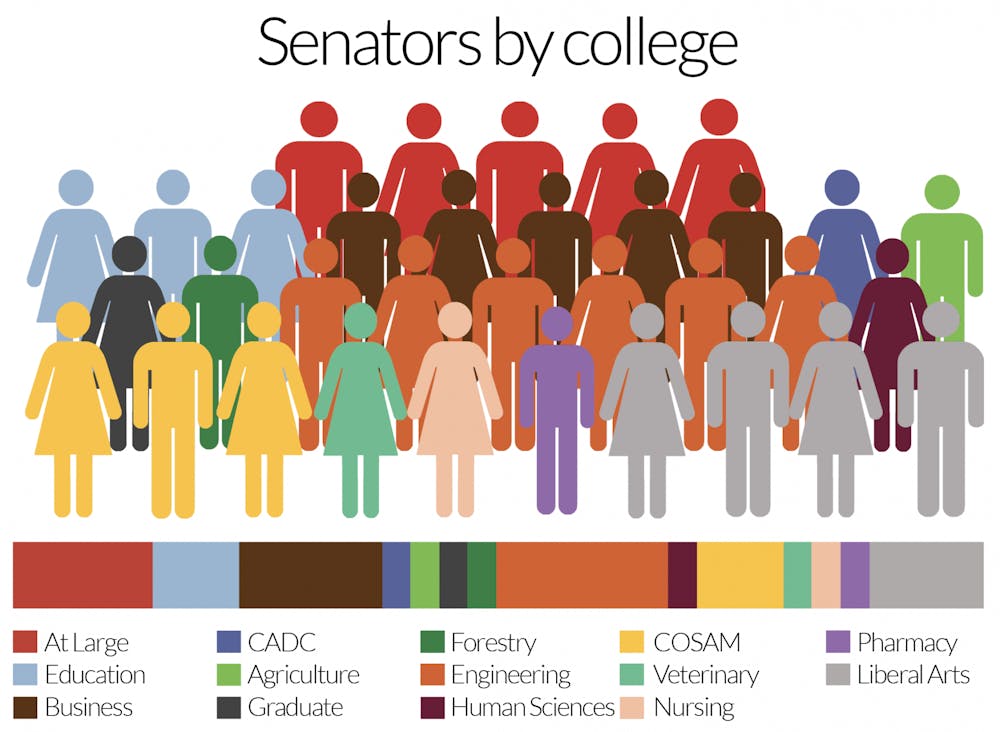The annual routine of campaigning, elections and runoffs for SGA positions can often blur into a minutia of platforms and promises, but there’s more to the process than that.
When student voters cast their ballots for president, vice president, treasurer, Miss Auburn and senators, they are choosing who will represent them to the rest of the University, to the administration and to other schools across the country.
In all, SGA is the biggest organization on campus; it is responsible for the expenditure of a large amount of student fees; and its members are often the face of the University.
With that being said, there are plenty of students who do not know how Auburn’s SGA functions or what it does.
The following is a simplified explanation of how SGA functions.
Legislative
The Legislative branch of SGA consists of the Student Senate, its committees and its subcommittees.
Right now, there are 34 senate seats in SGA, 29 of which are apportioned to colleges annually by the Senate.
The distribution of these seats is based on the academic demographics of the University. These senators are only elected by students in the college they are representing. The other five senate seats are elected by the student body at large.
All candidates for Senate must have at least a 2.5 GPA and have been enrolled at Auburn for at least one semester. Once elected, senators serve a one-year term.
The SGA Vice President serves as the President of the Student Senate and presides over their weekly meetings.
The Student Senate is responsible for passing legislation, approving an annual budget, confirming presidential appointments and establishing committees to investigate any issues concerning the student body.
Executive
The Executive branch of SGA consists of the SGA president, vice president, treasurer, members of the Executive Cabinet and the directors of programs.
Of those positions, the president, vice president and treasurer must be elected by at least 40% of student voters. Anyone wishing to run for those offices must have at least a 2.5 GPA and have completed at least two semesters at Auburn.
Importantly, the SGA president has veto power over any legislation passed by the Senate, but that veto can be overturned by a two-thirds vote in the Senate.
The president is also responsible for appointing the members of their Executive Cabinet and the directors of SGA programs.
Many of these programs have become Auburn traditions that are ingrained with people’s idea of Auburn.
For instance, Hey Day, the Holiday Lighting Ceremony, Homecoming and Aubie are all programs within SGA.
The treasurer specifically is responsible for organizing and proposing an annual budget based on proposals sent to them by individual organizations.
Judicial
The Judicial branch of SGA is composed of seven members of the Student Jurisprudence Committee and the Attorney General.
All of these people are appointed by the SGA president and confirmed by the Senate.
The Student Jurisprudence Committee interprets the SGA constitution and code of laws, and it has appellate jurisdiction in cases involving infractions of the election laws.
Do you like this story? The Plainsman doesn't accept money from tuition or student fees, and we don't charge a subscription fee. But you can donate to support The Plainsman.





